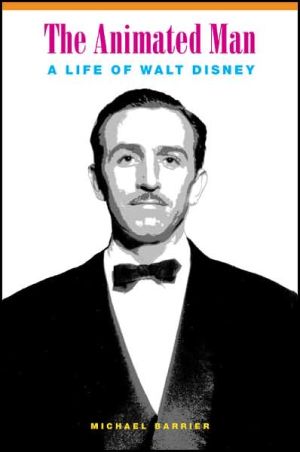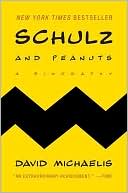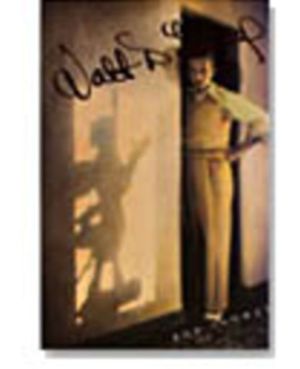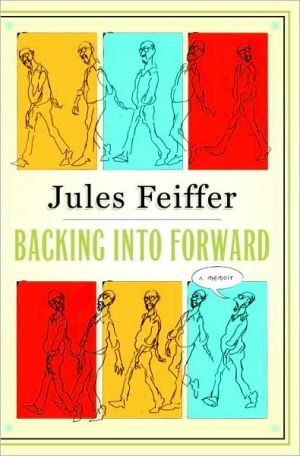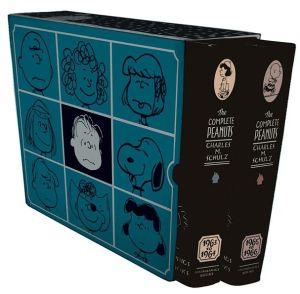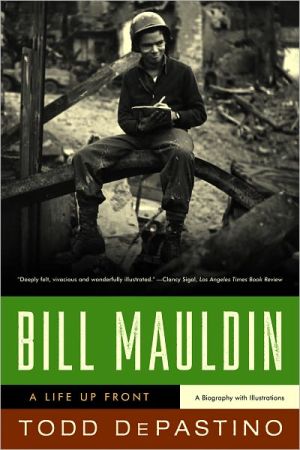The Animated Man: A Life of Walt Disney
Walt Disney (1901-1966) was one of the most significant creative forces of the twentieth century, a man who made a lasting impact on the art of the animated film, the history of American business, and the evolution of twentieth-century American culture. He was both a creative visionary and a dynamic entrepreneur, roles whose demands he often could not reconcile.\ \ In his compelling new biography, noted animation historian Michael Barrier avoids the well-traveled paths of previous...
Search in google:
"This book is important not just as a biography, but also as a cultural history that provides great insight to one of the best-known creative minds of the twentieth century. Barrier's engaging and highly informative writing style offers excellent perspective on how much changed in the world of animated cartoons during Disney's lifetime, and just how much the Disney studio brought about these changes. The remarkable quantity of first-person accounts, interviews, and other primary evidence is one of the book's most important attributes. This biography chronicles Disney's life while keeping in view the technological and stylistic developments in animation and filmmaking that Disney helped bring about. Barrier's deft navigation of a wide variety of historical streams gives Animated Man a uniquely comprehensive and compelling story about Walt Disney."—Daniel Goldmark, author of Tunes for 'Toons: Music and the Hollywood Cartoon"Michael Barrier's biography of Walt Disney is impressive, with a remarkable range of interviews. I was fascinated to see this mysterious world laid out as an industrial process—somehow, this makes what we see on the screen even more miraculous."—Kevin Brownlow, Director, Cecil B De Mille: American Epic and Garbo"The Animated Man is by far the best critical study to date of Walt Disney and his worlds: corporate, personal, ideological, architectural. Michael Barrier's years of discussion with Disney's collaborators and family members make for a richly textured discussion of a figure often dismissed by the scholarly community as a vulgarian of the worst sort. Barrier shows us a tireless innovator, a man of deep feeling, a true American original who has woven himself into the very fabric of modern culture."—Karal Ann Marling, editor, Designing Disney's Theme Parks: The Architecture of ReassuranceJeff Ayers - Library JournalBarrier (founder & editor, Funnyworldmagazine; Hollywood Cartoons) purports to reveal the mind of Walt Disney by examining his creative output. Without access to the Disney archives, he uses interviews and primary sources to determine what made Disney tick. Nothing new is revealed, and Barrier often uses his research to belittle and complain about Disney's classic work (e.g., Mary Poppins"suffers from debilitating weaknesses") as well as other endeavors bearing his name; Barrier writes of rides designed for the 1964 World's Fair and Disneyland, "All these exhibits invited aesthetic and intellectual objections that could not be applied seriously to the earlier rides at Disneyland." Certain seminal events in Disney's life, such as his polo injury and the death of his parents, are barely discussed. More of a critical slam of Disney's cartoons and films than a useful biography, this book will disappoint, bore, or anger fans of the man. For a more thorough and balanced Disney biography, read instead Neal Gabler's Walt Disney: Triumph of the American Imagination. Not recommended.
The Animated Man\ A Life of Walt Disney \ \ By Michael J. Barrier \ University of California Press\ Copyright © 2007 Michael Barrier\ All right reserved.\ ISBN: 978-0-520-24117-6 \ \ \ \ Chapter One\ "The Pet in the Family" \ On the Farm and in the City 1901-1923\ Marceline, Missouri, was a creature of the Atchison, Topeka and Santa Fe Railroad Company. In 1886, when the railroad planned a direct line between Chicago and Kansas City, it needed a town a hundred miles northeast of Kansas City as a "division point" where its trains could take on fuel, water, and fresh crews. There was no town there-that part of Missouri was sparsely settled prairie-and so the Santa Fe created one. The first town lot was sold on January 28, 1888, and Marceline was incorporated on March 6. It was in its early years a rowdy sort of frontier town, but by the turn of the twentieth century it had become more settled and respectable.\ When the town was laid out, its broad main street-called Santa Fe Avenue, naturally enough-intersected the railroad tracks alongside the depot. Dozens of trains passed through Marceline every day, and the townspeople, sensible of how those trains would disrupt a commercial street, built their businesses and homes not along Santa Fe Avenue, but along a street called KansasAvenue. That street ran parallel to the rail line, always a city block or two away, veering north-northeast with the tracks until it ended at Missouri Street. From that intersection, Missouri Street ran due north, quickly turning into a country road.\ Less than a quarter-mile north on that road, a mile from the Marceline depot and just outside the town limits, a two-story frame house a few years older than Marceline itself sat at the southeastern corner of a forty-five-acre farm. Early in the last century, that farm was home for a few years to a family named Disney-Elias, the husband; Flora, his wife; four sons, Herbert, Raymond, Roy, and Walter; and a daughter, Ruth.\ The Disneys moved to Marceline from Chicago in April 1906, drawn away from the city by Elias's fear that its crime and corruption would taint his children. He had chosen Marceline, readily accessible from Chicago, for its rural setting and because of a family connection. Robert Disney, Elias's younger brother and one of his ten siblings, was co-owner of a farm of 440 acres, less than a mile west of Marceline. Elias visited Marceline early in February 1906, just before he sold his house in Chicago. A month later, on March 5, 1906, he bought a forty-acre farm that had been owned by William E. Crane, a Civil War veteran who had died the previous November. The price was three thousand dollars, or seventy-five dollars an acre. A month later, on April 3, he paid four hundred fifty dollars for an adjoining tract, a little over five acres, that Crane's widow owned in her own name.\ The Disneys lived on Chicago's West Side, at 1249 Tripp Avenue. Elias and Flora and their first child, Herbert, had moved to Chicago by 1890. They were living then at 3515 South Vernon Avenue in the Fourth Ward, just south of downtown and less than a mile from Lake Michigan. Their second son, Raymond Arnold, was born there on December 30, 1890. Chicago was growing rapidly-an 1889 annexation had added 125 square miles and 225,000 people-and there was plenty of work for carpenters; Elias Disney identified himself as one in the 1891 city directory.\ On October 31, 1891, Elias bought a lot at 1249 Tripp. By sometime in 1892 he had built a house on it. Roy Oliver Disney, the third son, was born there on June 24, 1893, followed by Walter Elias on December 5, 1901, and, on December 6, 1903, the Disneys' youngest child and only daughter, Ruth Flora. The neighborhood, called Hermosa (for reasons that are unclear), was new and raw in the early 1890s, settled only a few years before by Scottish, German, and Scandinavian immigrants. It had been added to the city in the 1889 annexation.\ "A neighboring family just like ours was very close to us," Roy Disney told Richard Hubler in 1967. "We woke up one morning and two of their boys were involved in a car barn robbery.... Shot it out with the cops, killed a cop. One of them went to Joliet [Prison] for life and the other got twenty years. These kids were just the same age as my older brother and my second brother [that is, in their midteens]. We had a nice neighborhood. A lot of good Irish and Poles and Swedes around there, but it was a rough neighborhood, too, in a way." There were saloons on three corners where the Disneys bought their newspaper.\ Elias and the two older boys, Herbert and Raymond, escorted "a box car full of our household furniture and two horses that dad bought in Chicago," Roy recalled. Flora traveled separately with the two younger boys and Ruth, evidently arriving ahead of her husband. Walt Disney was only four years old then, but he wrote more than thirty years later: "I clearly remember the day we arrived there on the train. A Mr. Coffman met us in the wagon and we rode out to our house in the country just outside the city limits. I believe it was called the Crane Farm. My first impression of it was that it had a beautiful front yard with lots of weeping willow trees."\ Roy remembered their new home as "a very cute, sweet little farm, if you can describe a farm that way." The forty-five acres included orchards of apples, peaches, and plums, as well as fields of grain, and the farm was home to dozens of animals-hogs, chickens, horses, and cows. "Of course," Roy said, "it was just heaven for city kids."\ Almost fifty years after leaving it, Walt Disney also spoke warmly of the farm. "It had two orchards, one called the old and one called the new. We had every kind of an apple growing in that orchard. We had what we called Wolf River apples. They were that big.... People came from miles around to see our orchard. To see these big things."\ (Disney's affectionate memories of his childhood on the farm, like anyone's childhood memories, may not be entirely trustworthy. On a return visit to Marceline in July 1956, he spoke to a welcoming crowd of his exploits as a "hog rider." Then, as on other occasions, he said he rode atop sows until they plunged into what he variously called a "pig pond" or mud puddles. Roy Disney dismissed that story as "some of his ebullience.... There never were any mud puddles.")\ Marceline's population had risen to more than twenty-five hundred by 1900, and it peaked at around four thousand while the Disneys lived there. Marceline was just large enough-at a time when the majority of Americans lived in even smaller places-and just close enough to the Disney farm, to hold a certain urban allure, at least for a boy who was too young to remember much about living in Chicago, as the older Disney brothers did. Walt Disney's strongest nostalgia in later years was less for farm life than for the busy life of a prosperous small town.\ In the first decade of the twentieth century, Marceline was not some isolated, impoverished rural outpost. Kansas Avenue was lined with shops, and for most if not all of their Marceline stay, the Disneys had a telephone (their name is in a 1907 directory). It was, however, the trains that kept Marceline in touch constantly with the wider world. In those days-with the automobile in its infancy and the roads for horse-drawn vehicles mostly poor-trains dominated freight and passenger service to an extent hardly conceivable a century later.\ Walt Disney remembered the scarcity of automobiles in the Marceline he knew. In a May 15, 1952, meeting during work on Lady and the Tramp, an animated feature set at the turn of the twentieth century, he said: "In this period-I can remember those days, you know-I lived in a little town in Missouri, and there were only two automobiles. It was 1908. They began to come in then."\ The trains were, besides, daily reminders that much larger cities were only a few hours away. Combining speed, power, and the romance of faraway places, the railroads had few competitors for the imaginations of millions of people, boys especially. In the decades that followed, even as the railroads slowly gave up their position atop the American economy, model railroads thrived, their elaborate layouts built by middle-aged men who had fallen under trains' spell when they were children. As a train fancier in later years, Walt Disney would be one among many.\ For the Disney children, a family connection enhanced the trains' appeal: their mother's older sister Alice (who had died in 1905) was married to Mike Martin, a Santa Fe engineer. The Martins lived a little more than a hundred miles up the line, in Fort Madison, Iowa, near the Mississippi River, and Martin's work took him through Marceline. As Roy Disney recalled, "We used to ride in the cab with him once in a while."\ Elias Disney had been modestly successful in Chicago, but he was not a man for whom success of any kind was a natural fit. Before moving to Chicago, he had failed as an orange grower in Florida. For him to return to farming of any kind was tempting fate, however unselfish his motives.\ Elias was a Canadian, born in rural Ontario in 1859. He was the eldest of the eleven children of Kepple Disney and his wife, Mary Richardson, both of whom had immigrated to Canada from Ireland as children, with their parents. Kepple and Mary lived after their marriage on a farm about a mile from the village of Bluevale. Official Disney biographies suggest that the Disney name is a corruption of a French original, and that the first Disneys came to England in the eleventh century with the Norman invaders, but, as traced through census records, the family tree's roots dwindle to invisibility in eighteenth-century Ireland.\ Kepple Disney and his family moved to a farm at Ellis, Kansas, in 1878, and it was from there that Elias moved to Florida and undertook his failed venture as an orange grower. In Florida on January 1, 1888, he married Flora Call, sixth of eight daughters (there were two sons) in a family he had known in Kansas. Flora, born in 1868, was nine years Elias's junior. Their first child, Herbert Arthur, was born in Florida on December 8, 1888.\ After the family moved to Chicago, Elias found work as a carpenter at the World's Columbian Exposition of 1893. The skimpy record of building permits issued around the turn of the twentieth century suggests that he had by then become an active contractor, building houses that he owned for resale. When his father was a Chicago contractor, Roy Disney said, Elias "built the Congregational church in our neighborhood." That was Saint Paul Congregational, at the intersection of Keeler and Belden Avenues, two blocks from the Disneys' home. The church was organized in 1898, and its newly constructed building was dedicated on October 14, 1900.\ "We belonged there," Roy said. "Dad used to sub for the preacher when he was away. All us kids went to Sunday school and church." Elias was one of the church's trustees, Flora its treasurer. Walter Elias Disney was named for his father and for Walter Robinson Parr, the English-born minister of Saint Paul Congregational from 1900 to 1905. Walt Disney was baptized at the church on June 8, 1902. Parr gave the name Walter Elias to a son of his own in 1904.27\ Elias Disney was a highly religious man, "a strict, hard guy with a great sense of honesty and decency," in Roy Disney's words. "He never drank. I rarely ever saw him smoke." Elias was not just a Christian of a flinty sort, but also a socialist, a follower of Eugene V. Debs. Walt Disney remembered copying the cartoons by Ryan Walker in the Kansas-based socialist newspaper, the Appeal to Reason, which came to the Disney household every week: "They always had a front-page cartoon, of capital and labor, and when I was ... trying to draw ... I had them all down pat."\ In 1894, when the Disneys were living in Chicago and the United States was suffering through a severe depression, capital and labor collided in the most traumatic fashion. The Pullman strike, which began in a company town south of Chicago, spread throughout the country when the American Railway Union, whose president was Debs, declared a boycott of trains that included Pullman sleeping cars. The strike ended only after President Grover Cleveland sent federal troops to Chicago and other cities in July; Debs was jailed for disobeying an injunction against the boycott. Elias Disney's socialist beliefs undoubtedly owed something to what he saw of the Pullman strike and its outcome.\ Many people have found socialist and Christian beliefs compatible, and that was certainly true at the turn of the last century, but their juxtaposition was particularly unfortunate in Elias's case. His allegiances encouraged him to see his failures as evidence that he was in thrall to grim, implacable forces, either his own weakness and sin or an increasingly impersonal and machinelike economy. Elias had an entrepreneurial temperament, as evidenced by his repeated attempts to go into business for himself, but all signs are that his beliefs pushed him toward stoic persistence and away from the nimbleness and opportunism that have always marked successful entrepreneurs.\ Elias's sons responded in different ways to their father's demands. The two oldest boys, Herbert and Raymond, shared a bedroom on the first floor of the Marceline house. "They didn't like the farm," Roy said, "and after about two years [probably in the fall of 1908] they went out the window one night and went back to Chicago." Both soon wound up working in Kansas City as clerks.\ The older sons apparently never talked on the record about their father, but Roy Disney did, at one point recalling an episode that would not seem to reflect well on Elias, whatever the transgression that provoked him:\ "I remember in Chicago we had an apple tree in the back yard. He'd send me to my room where I could see down over the backyard. And he'd wait a half hour; then he'd casually walk out there and eye the tree and go over to it ... making an impression on me ... select a switch and cut it off, feel it, test it out like a little whip. All the time I'm in torture up there thinking about my licking. When he came up there he'd have a little switch and the biggest part of it would [be] no bigger than your finger. And you had to take your pants down and you got a switching. That was Dad."\ Both Walt and Roy Disney remembered their father's quick temper, which found a mirror in their own impatience with him. "He knew what he wanted to do," Walt Disney said, "and he expected you to know just what he wanted to do.... I'd say, 'And how can I read your mind? ... I'd come right back at him. He'd get mad ... and he'd start after me. And my dad was the kind of guy who'd pick up anything near him"-even a hammer or a saw, although Elias retained enough self-possession that he attacked his sons only with the handle of the hammer or the side of the saw. Walt's defense was to run away until his mother had restored calm.\ Elias "had a peculiar way of talking," Walt said. "I could never figure some of the expressions he used. He'd get mad at me and call me a little scud. He says, 'You little scud, I'll take a gad to you,' and I found out later, when I was digging into Irish law and things, that a scud is equivalent to a little squirt ... and a gad is something they used to sort of flail, you know, they used to beat the grain with it."\ The two younger Disney brothers remembered their father not as the forbidding man such anecdotes suggest, but with obvious fondness and unforced compassion. Elias was, they recognized, a decent man caged by harsh ideas. "A good dad," Roy said. "So I don't like him put in the light of being a brutal or mean dad. That he was not."\ Elias had no gift for small talk, even with his sons. He was, after all, past forty when his two youngest children were born. "Yet he was the kindest fellow," Walt said, "and he thought of nothing but his family." Walt spoke of his father "constantly," his daughter Diane said in 1956. "I think Dad had a very strong family feeling. He loved his dad. He thought he was tough. But he did love him. He loved that old man." Strip away the crippling dogmas that Elias embraced, and a far more appealing figure emerges, a vigorous risk taker who was not afraid to take chances even when he was well into middle age-a figure with more than a passing resemblance to his youngest son.\ Elias "loved to talk to people," Walt Disney said. "He believed people. He thought everybody was as honest as he was. He got taken many times because of that." Elias had a winning streak of eccentricity, as Walt recalled: "Dad was always meeting up with strange characters to talk socialism.... He'd bring them home! ... And anybody who could play an instrument.... They were tramps, you know? They weren't even clean. But he'd want to bring them into the dinner table, and my mother would have nothing of it. She'd feed them out on the steps."\ (Continues...)\ \ \ \ \ Excerpted from The Animated Man by Michael J. Barrier Copyright © 2007 by Michael Barrier. Excerpted by permission.\ All rights reserved. No part of this excerpt may be reproduced or reprinted without permission in writing from the publisher.\ Excerpts are provided by Dial-A-Book Inc. solely for the personal use of visitors to this web site. \ \
Preface ixAcknowledgments xvIntroduction: "It's All Me" 1"The Pet in the Family": On the Farm and in the City, 1901-1923 9"A Cute Idea": The Self-Taught Filmmaker, 1923-1928 39"You've Got to Really Be Minnie": Building a Better Mouse, 1928-1933 68"This Character Was a Live Person": The Leap to Feature Films, 1934-1938 100"A Drawing Factory": Ambition's Price, 1938-1941 134"A Queer, Quick, Delightful Gink": On a Treadmill, 1941-1947 168"Caprices and Spurts of Childishness": Escaping from Animation, 1947-1953 200"He Was Interested in Something Else": Escaping from Film, 1953-1959 235"Where I Am Happy": Restless in the Magic Kingdom, 1959-1965 270"He Drove Himself Right Up to the End": Dreaming of a Nightmare City, 1965-1966 301Afterword: "Let's Never Not Be a Silly Company" 319Notes 327Index 379
\ Library JournalBarrier (founder & editor, Funnyworldmagazine; Hollywood Cartoons) purports to reveal the mind of Walt Disney by examining his creative output. Without access to the Disney archives, he uses interviews and primary sources to determine what made Disney tick. Nothing new is revealed, and Barrier often uses his research to belittle and complain about Disney's classic work (e.g., Mary Poppins"suffers from debilitating weaknesses") as well as other endeavors bearing his name; Barrier writes of rides designed for the 1964 World's Fair and Disneyland, "All these exhibits invited aesthetic and intellectual objections that could not be applied seriously to the earlier rides at Disneyland." Certain seminal events in Disney's life, such as his polo injury and the death of his parents, are barely discussed. More of a critical slam of Disney's cartoons and films than a useful biography, this book will disappoint, bore, or anger fans of the man. For a more thorough and balanced Disney biography, read instead Neal Gabler's Walt Disney: Triumph of the American Imagination. Not recommended.\ —Jeff Ayers\ \ \
